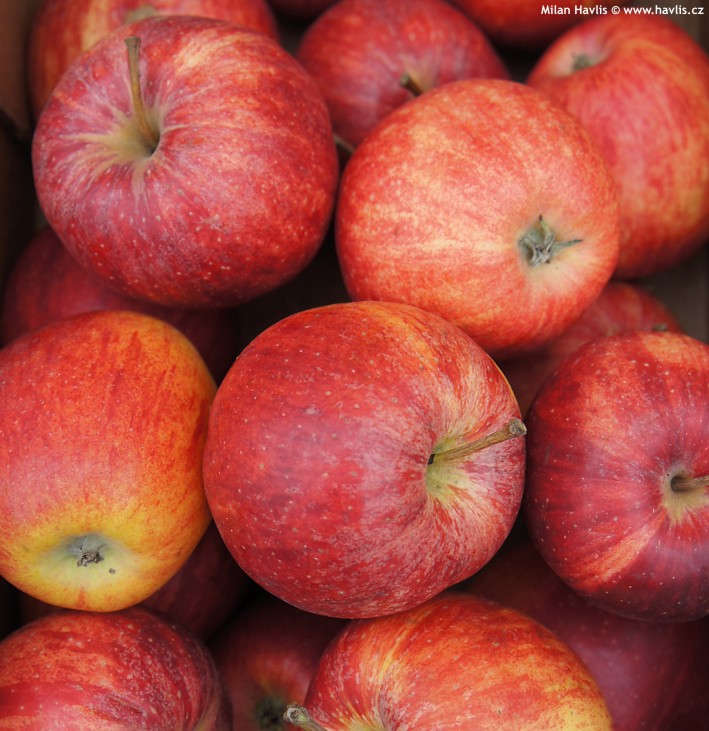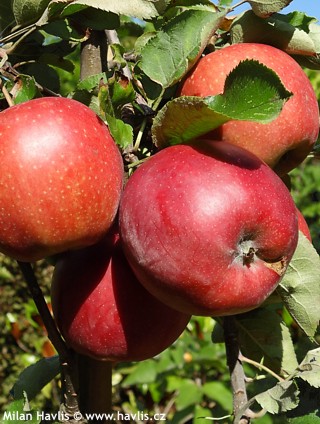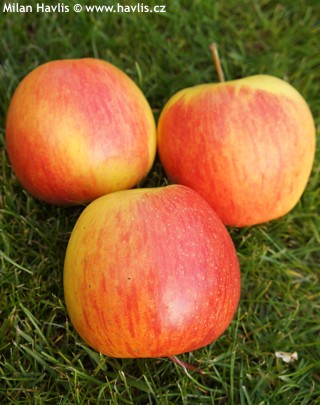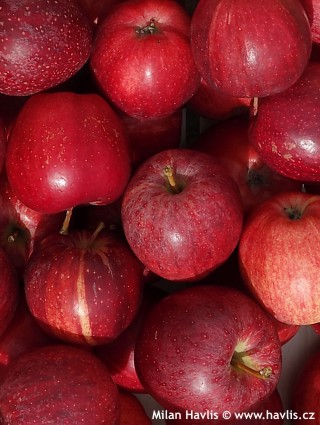Malus domestica 'GALA' apple tree - late - self-fertile
size/type
small tree,small tree
usual height
3-4m
usual width
2-3m
leaves
deciduous broadleaf
colour of leaves
flowers
showy
colour of flowers
blooming time
April-May
location
full sun
USDA zone (lowest)
5 (down to -29°C)
winter protection
for zone 5+6

for zone 7

categorized
Description of the plant:
Gala is one of the most famous and popular apple varieties renowned for its great taste as well as reliability. It originated in New Zealand in 1934, bred by J.H.Kidd as a cross between Kidd's Orange Red and Golden Delicious. With WWII coming the time was not right for apples so it had to wait until 1960 for its introduction. Since then it has literally conquered the world, without weapons or war strategies, and now is present on all continents. It is still widely cultivated though newer sports such as Royal Gala and Gala Must are available. Gala apple is medium sized, oval to conical, of yellow skin with soft scarlet red flush all over in various depth, and typical red stripes. The taste is excellent - so sweet, aromatic, and only mildly acidic. The flesh is pale yellow, crispy, and extremely juicy. It can be harvested from late October, and tastes great eaten off the tree, or even better after 3-4 weeks of storing when more sugars have developed. It stores well until late spring but loses flavour with age. It is fully resistant to powdery mildew and reasonably resistant to scab under good growing conditions. Heavy cropper.
Apple trees will grow in almost any well-drained soil but for best results provide them with deep, fertile soil and keep it moist at least 6 months after transplanting, and in early summer when fruit is formed. It is partially self-fertile but for high yield will need a pollinator such as Čistecké, Elstar, Falstaff, Granny Smith, James Grieve + Red, Jonathan, Kent, Melrose, Opal, Otava, Pinova, Rajka, Red Delicious, Reine des Reinettes, Rubinette, Rubinola, Spartan, or Starking. Pruning can be done in frost-free periods of winter but it grows best being left to its own devices. Hardy to min. -29°C (USDA zone 5).
Last update 02-02-2019
QUICK PRICE OVERVIEW
CURRENTLY SOLD OUT
WANT TO TRY A SIMILAR PLANT?

















